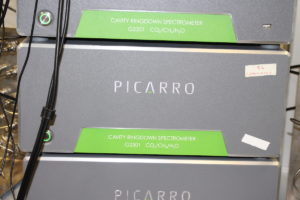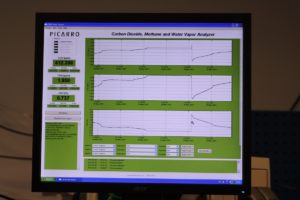By September 2018, we install a new equipment for Greenhouse Gases (GHGs) monitoring at the Atlas Mohamed V (AMV) Atmospheric Research Station. This installation is made by the Team of Dr Michel Ramonet from Laboratoire des Sciences du Climat et de l’Environnement (LSCE/CNRS/CEA) in Saclay (France).
Information about greenhouse gas emissions is essential for decision makers to track the effectiveness of emission reduction policies in the context of Climate Change agreements. The major contributors to the increasing emissions have been the human activities. Anthropogenic greenhouse gas emissions have increased since the pre-industrial era and are now higher than ever. Carbon dioxide (CO2), methane (CH4) and nitrous oxide (N2O) are among the most important GHGs.

The LCSE team will install a system dedicated to continuous monitoring of CO2, CH4 and H2O (N2O measurements will start in a later stage).
 |
 |
 |
 |
The equipment for GHGs to be installed at AMV in September 2018
Following the installation of the above instruments, and after insuring that AMV will be able to provide timely and reliable data for research, policy making, and the general public, the station will apply for the integration of the Integrated Carbon Observation System Research Infrastructure (ICOS RI).
The Integrated Carbon Observation System (ICOS) is a pan-European research infrastructure which provides harmonised and high-precision scientific data on carbon cycle and greenhouse gas budget and perturbations.
